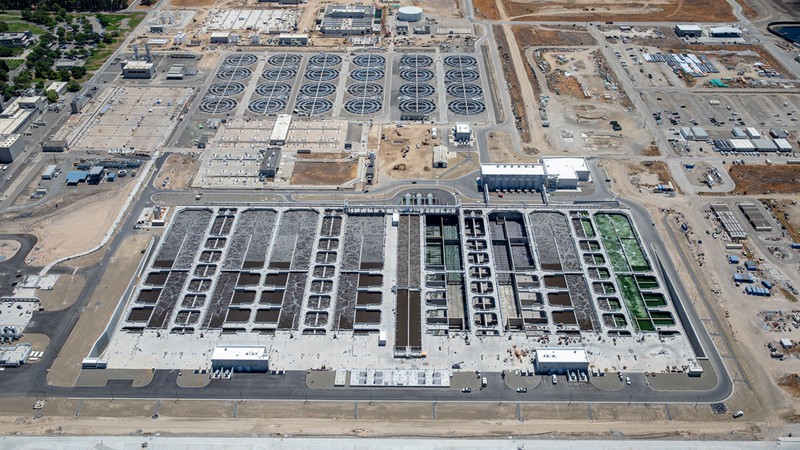The Sacramento Regional County Sanitation District’s new initiative is to repurpose wastewater for landscape and agricultural irrigation.

The Harvest Water Project, a recycled water initiative newly launched by Regional San, will take in tertiary-treated water from the EchoWater Project (seen above) for landscape and agricultural irrigation. Todd Quam (courtesy of Regional San) Digital Sky Aerial Imaging
With the completion of the EchoWater Project, Regional San is launching another initiative, dubbed the Harvest Water Project, in which the expanded treatment plant will produce recycled tertiary-treated water for landscape and agricultural irrigation, which benefits farmers, the environment, and helps preserve the state’s water supplies, especially during drought conditions.
“Although we were already doing water recycling on a small scale, this program will have a much bigger impact,” said Dobson, who stressed that Harvest Water is a voluntary program.
Regional San will build a recycled water pump station at its plant, which will distribute the water via pipelines to southern Sacramento County, where farmers will be able to purchase and use the water to irrigate their land.
“I think it will have a huge benefit for farmers with all the stressors that are on groundwater basins in the area,” said Sacramento County Farm Bureau Board Member Mike Wackman. “It provides a long-term water supply and helps give stability for generations to come.”
Kristal Davis Fadtke is an environmental program manager with the California Department of Fish and Wildlife, which works with other agencies to help manage and oversee the state’s biological resources.
“Because Harvest Water will provide recycled water in lieu of landowners pumping groundwater, that’s going to allow groundwater levels to go up,” she said.
This will help support thousands of acres of groundwater-dependent ecosystems, she said, which will allow for more wetlands and riparian habitats that in turn support a variety of species, from sandhill cranes to chinook salmon.
“But it’s important to remember that this is just one piece of the puzzle. We need more projects like this to really make an impact.”
Harvest Water Project officials are working with the California Water Commission on early reimbursements for the initial 5% of the $291.8 million total funding from the Water Storage Investment Program. It also continues to work with the U.S. Bureau of Reclamation on a grant award and continues to explore additional funding opportunities.
Dobson said he anticipates construction will begin this summer on Harvest Water, which actually consists of six different projects. While he said there is no set deadline for the project, he said “We hope to get water out to farmers in 2025.”
Long form articles which explain how something works, or provide context or background information about a current issue or topic.